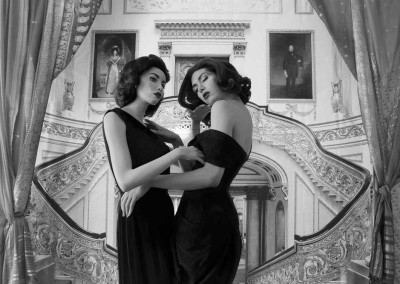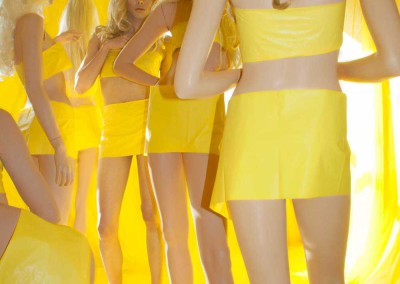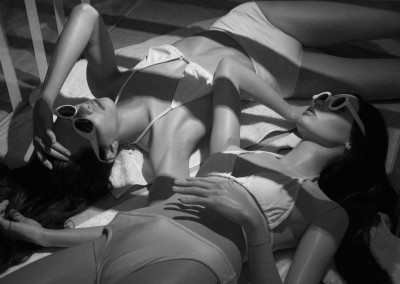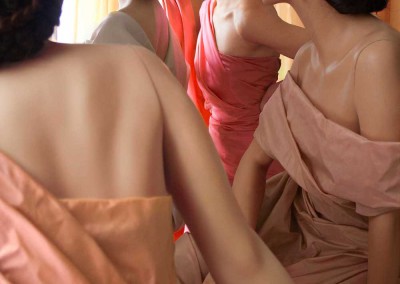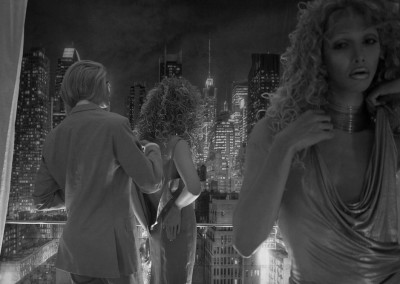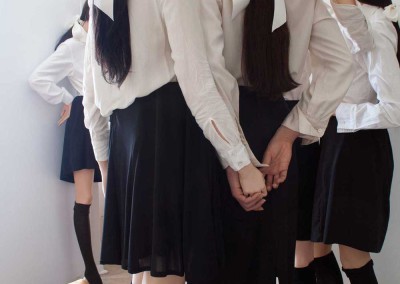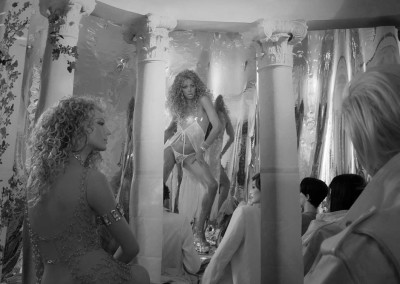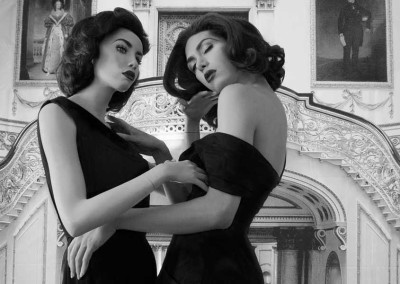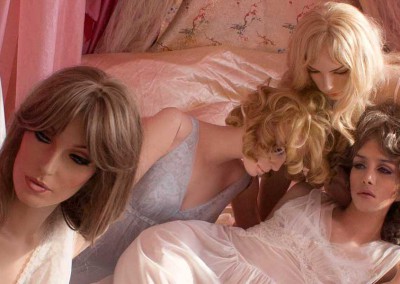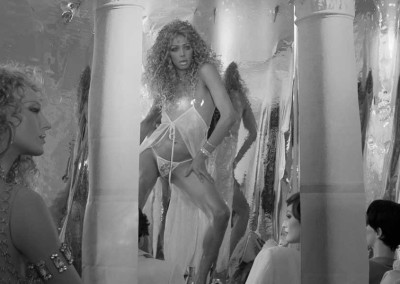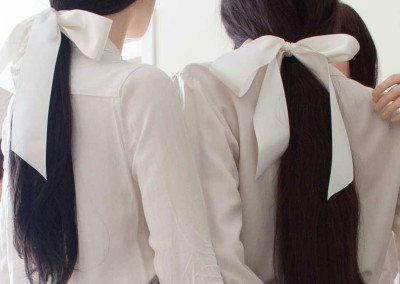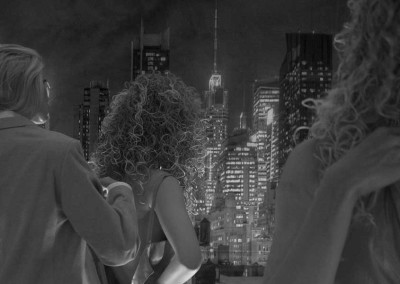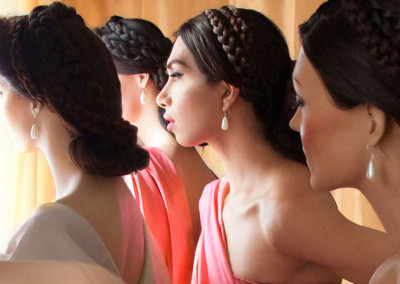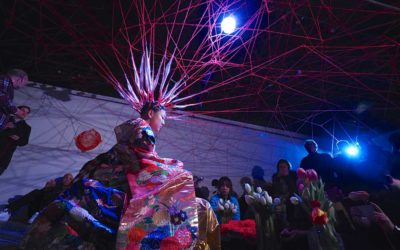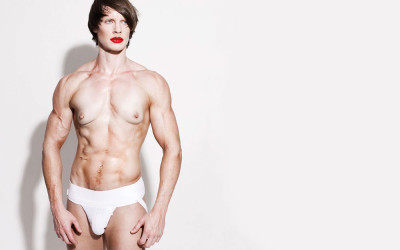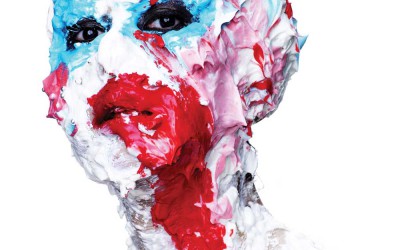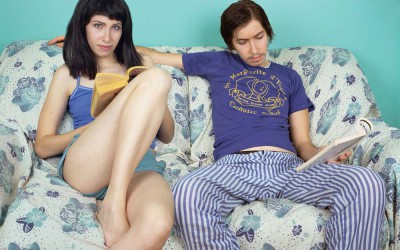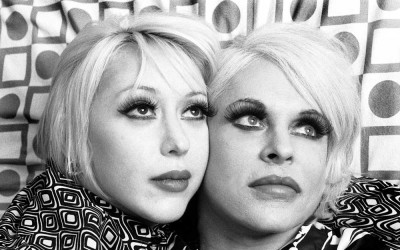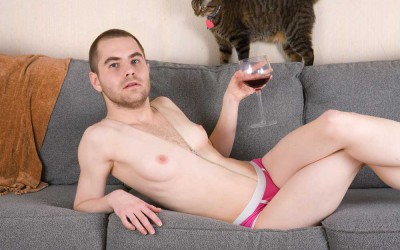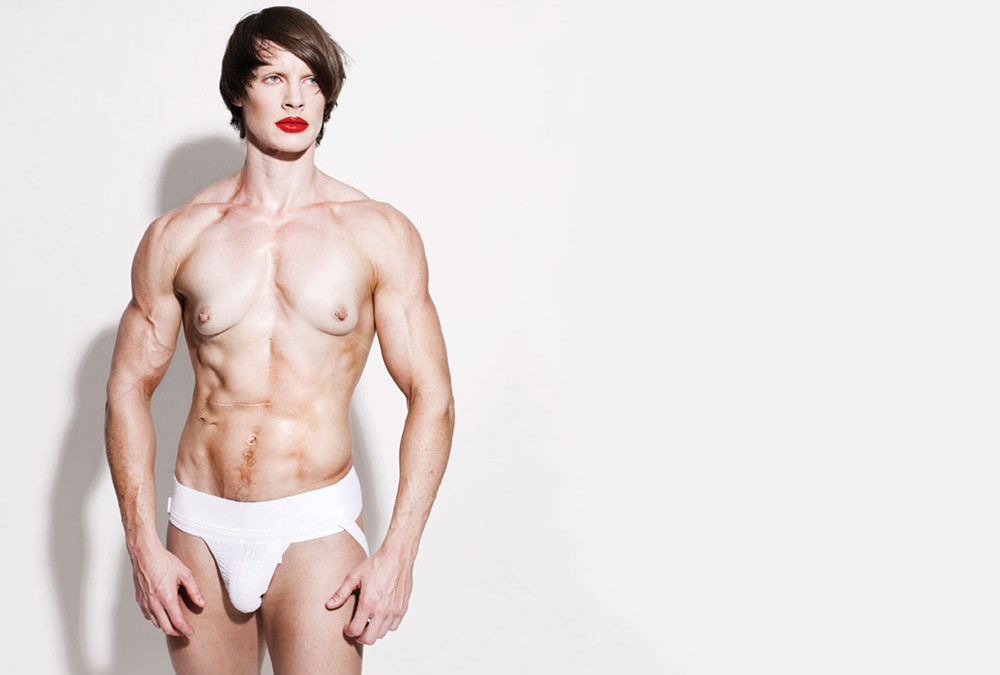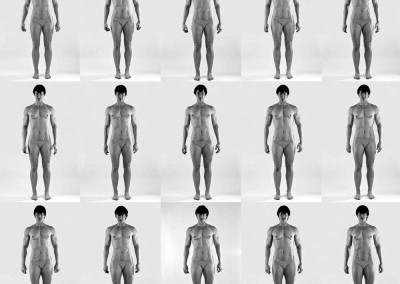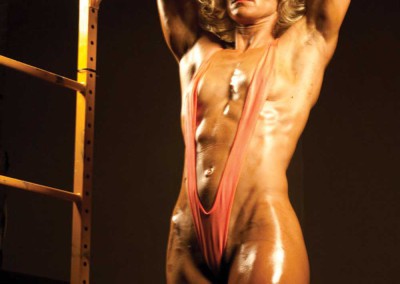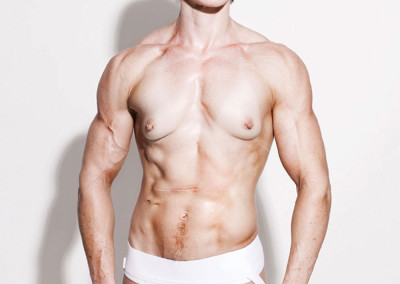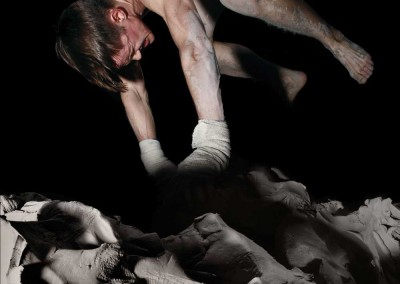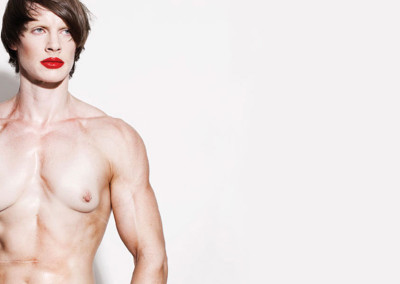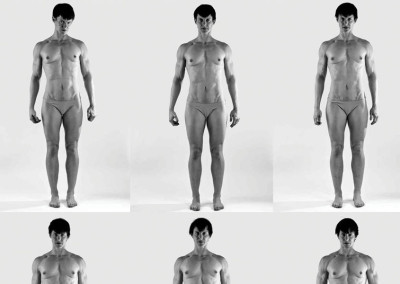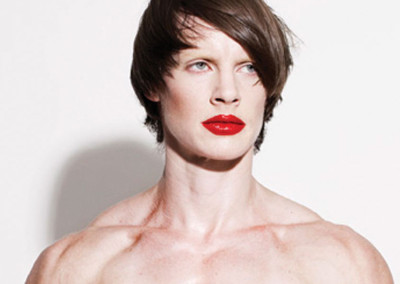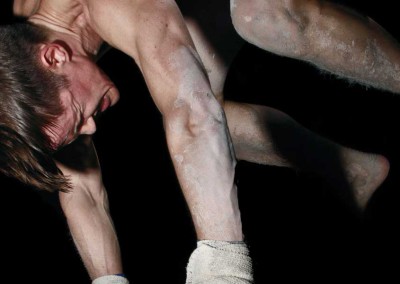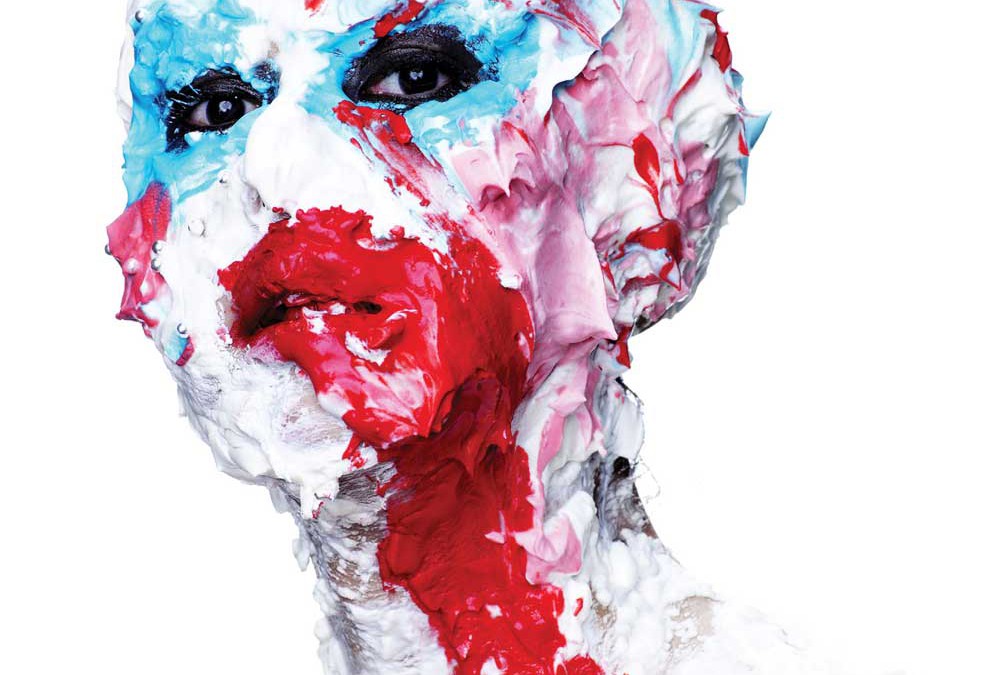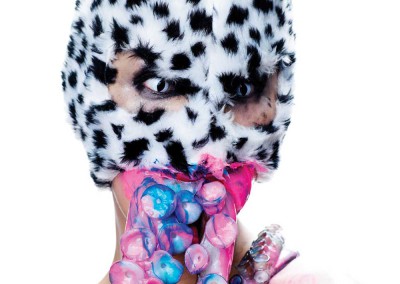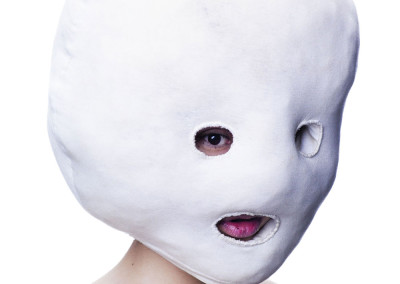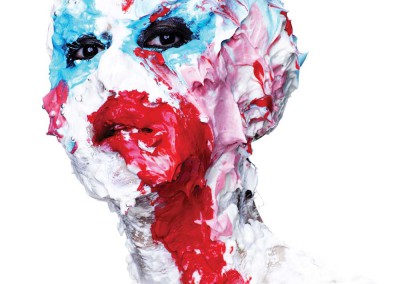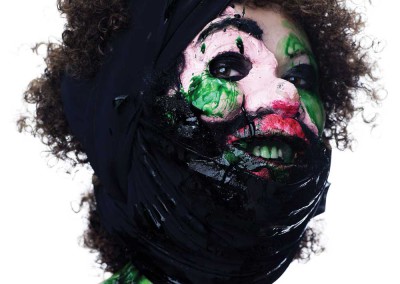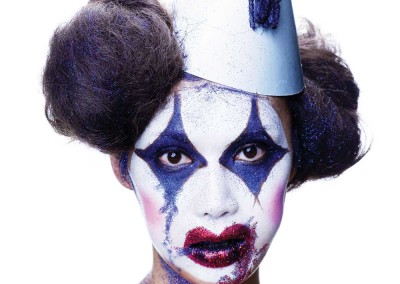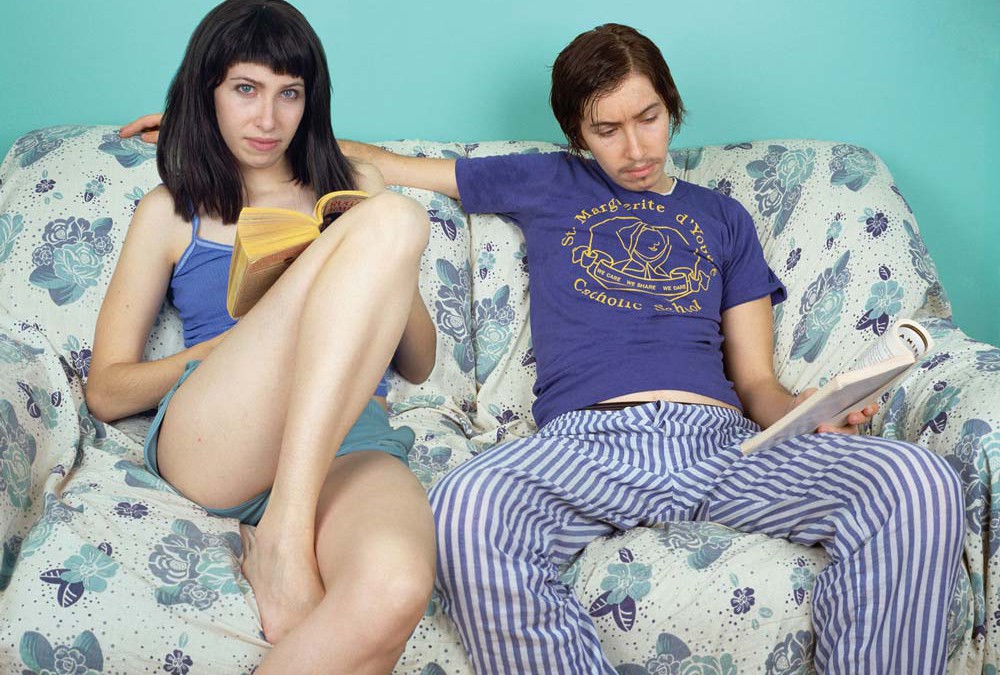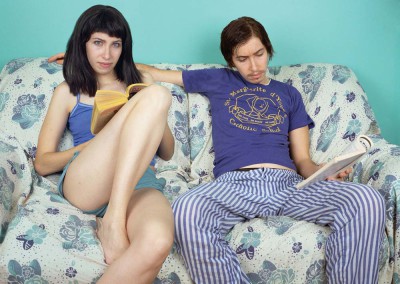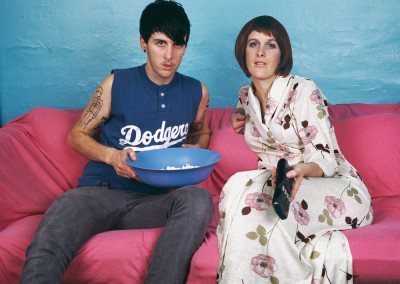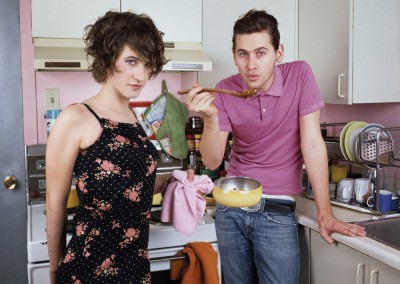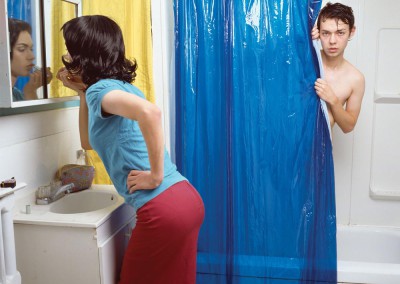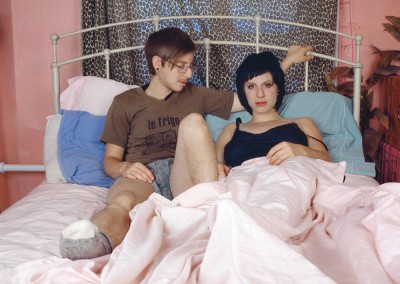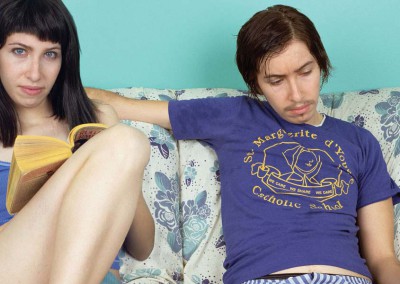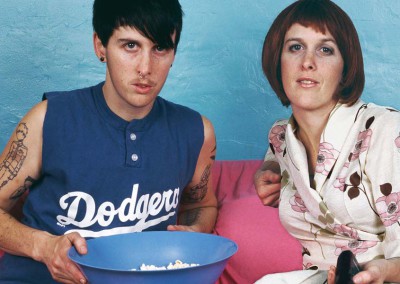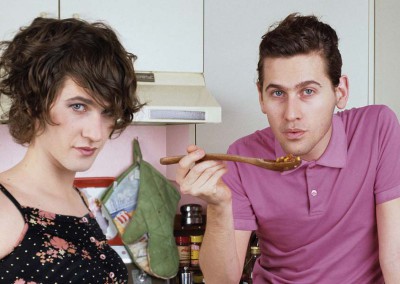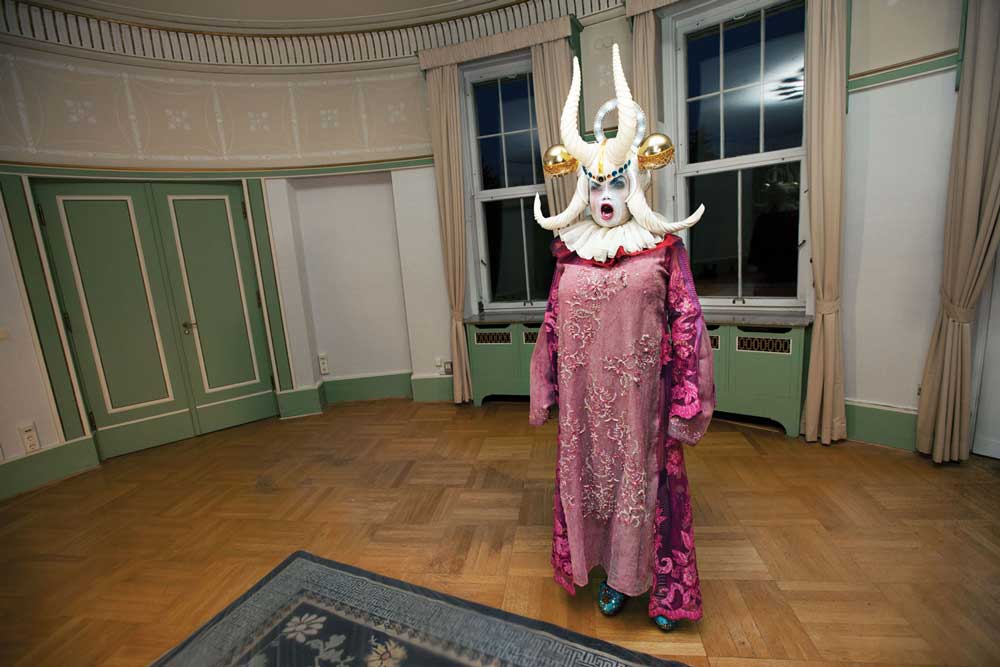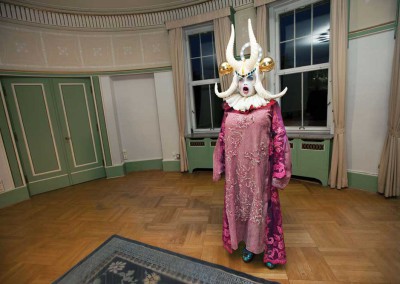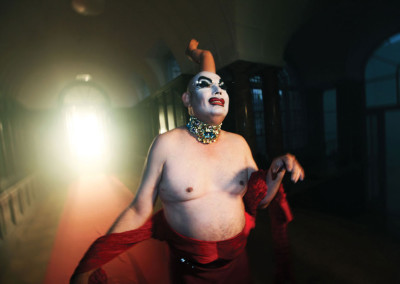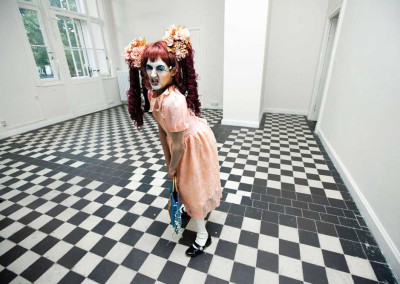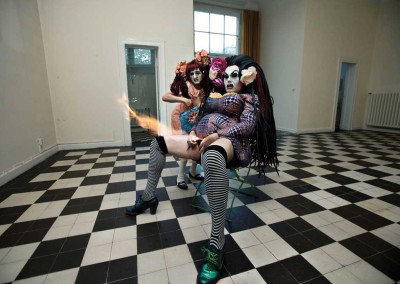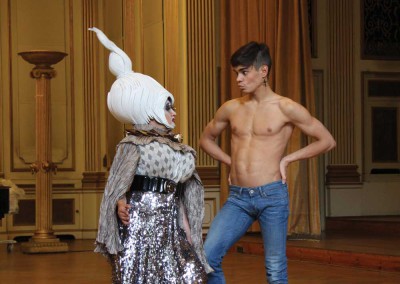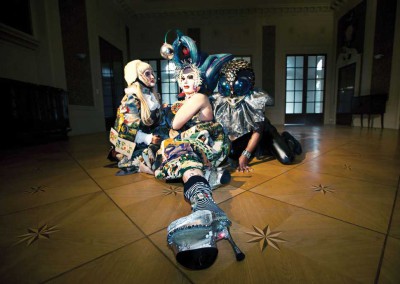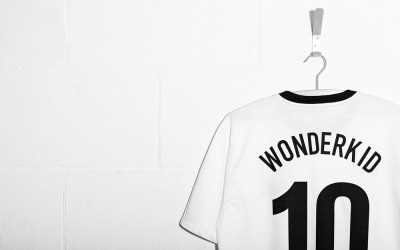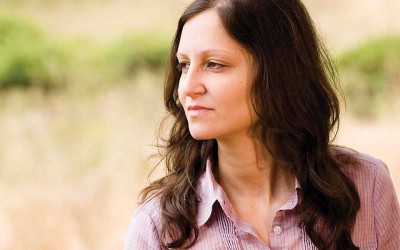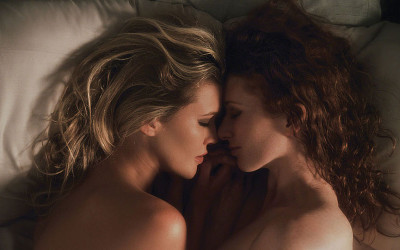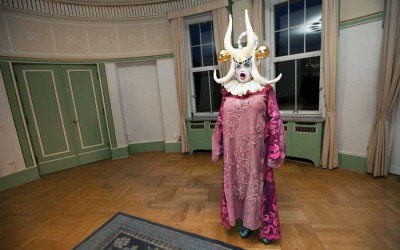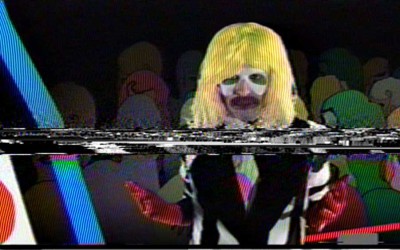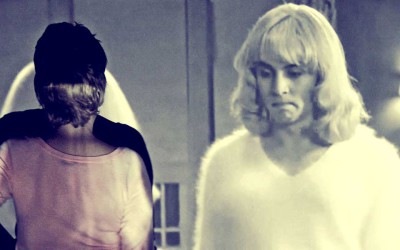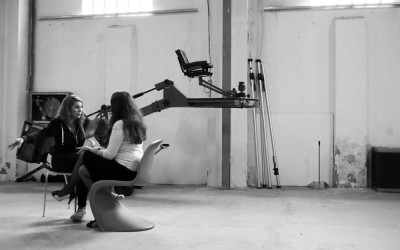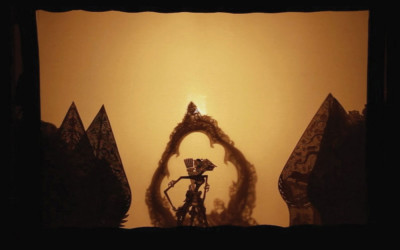Artist Ayakamay explores the interrelationship between photography and performance. She simultaneously appropriates traditional Japanese cultural aesthetics and creates a dialogue with contemporary American urbanity and femininity…..
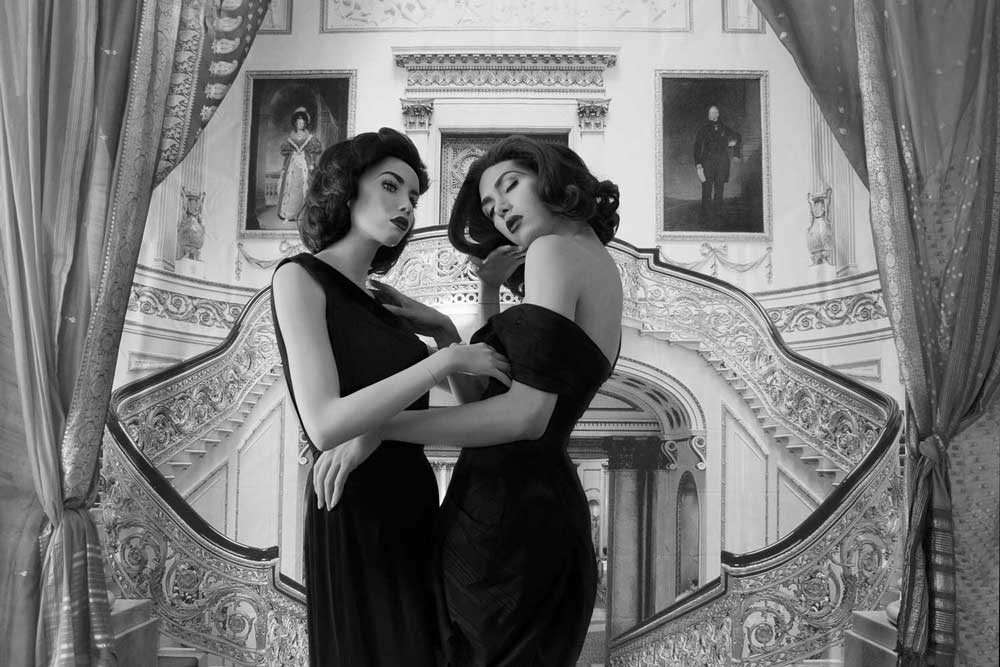
Martin(e) Gutierrez
Martin(e) Gutierrez
Text JF. Pierets Artwork Martine(e) Gutierrez
Artist and Et Alors? #14 cover model Martín(e) Gutierrez investigates identity, through the transformation of physical space and self. Interested in the fluidity of relationships and the role of gender within each, s/he employs mannequins as counterparts to explore the diverse narratives of intimacy. Nothing is what it seems and the pictures show both mannequins and the artist him/herself, shifting identities throughout each image. Martín(e) executes every aspect of the process from hair and make-up to costume and set design, as well as lighting, directing, and photographing.
A conversation with a very intriguing, beautiful and genuine artist.
You just showed new work at the Ryan Lee gallery in New York. How was it?
I noticed that people were pretty confused about what they saw. I think it’s part of our culture that everyone wants to know exactly what they are looking at and why. People want to know which images is me. They want me to tell them what’s going on in each picture or video. Part of the time I let them struggle with it, ‘cause that’s just how you learn.
When did you start making art?
I began drawing and making art when I was very young, but it wasn’t considered fine art back then. I made lots of self-portraits and I used to pose my dolls so I could make portraits of them. I was the ‘class artist’ in grammar school and continued taking every art class I could fit into my schedule throughout high school and during summers. I was a Print Making major at RISD. My college made a distinction between fine arts majors such as painting, print making or sculpture, and the more commercial art majors, such as graphic design, illustration, or architecture. I call them commercial because there was an available job market after graduation. As an artist, you ask yourself, ‘How can I make a living doing what I love? How do I get paid for making?’ I have always put my art first, even before my social life. Art has always helped me to form my own identity, both inside as well as outside of being an artist.
And what’s that identity?
I still don’t know because it’s a work in progress. The press likes to talk about me as some gender bender, gender fluent artist and I think its true, but growing up I never identified that way. It was just a part of me that I didn’t name.
But it was always there?
Definitely. I was always wavering. I always travelled back and forth between feminine and masculine and never saw a clear separation between the two. For me, I need to live with the flexibility, the freedom without limits to be happy.
Do you feel like living in privileged scenery, being an artist? That it’s somewhat easier to be yourself?
I guess so, yes, although I think I would still do this if I was working in an office. I would probably go into work in costume. One day I’d go in a pencil skirt, with a blazer and huge earrings. The next day I would go in a jumpsuit. As long as I am doing my job, why should it matter? Besides being an artist I also have another job, a part time thing, because I can’t yet support myself solely making art.
What is your other job?
I work for a production company based in Paris. They make videos for high-end brands such as Dior, YSL, Dolce & Gabbana… and I make the music.
Does it overlap with your art?
Not really; they don’t think of me as an artist. I’m more like a sound engineer to them.
How did you become the artist you are today?
By pursuing self-expression in as many forms as possible. Dance, theater, singing, painting, drawing, video and photography – these are all mediums I became familiar with at an early age. Having the technical skills to do many jobs simultaneously definitely sustains my practice as an artist. It’s how I’ve worked independently for so long. Most everything I make by myself.
You basically made the scenery and shoot the pictures?
Yes, I started at home rearranging things to create sets. Usually I would shoot when my parents were away. When they came home, I had to run and put everything back, so they wouldn’t be upset that I had just destroyed the house for a photo shoot. I would also sometimes wear my sister’s clothing and had to put things back so she wouldn’t notice. I had to be sneaky. Now I have my own costumes and studio – so I can be as messy as I want and take as long as I want building a set.
How about your parents now?
My mother has always been supportive. I had wigs, capes, dresses, and she was always making more. She was a big fan of making things instead of buying them. As for my father, well it used to make him uncomfortable. He’s from Guatemala and I was none of the things that represent a Latin American male. I was very feminine. But he has softened with age and came to NYC for the opening of my last show. It was really great because he saw all that is happening in my life right now.
And what is that exactly?
Oh, I don’t know… am I becoming famous? It’s kind of scary if I am!
Why?
Because I just love my privacy. For most of my life, I have been stared at by people. A few old friends used to tease me, saying they were tired of going out with me because everyone was always watching me, not them. But it’s not like I am always looked at for a good reason. I feel like I have been on the periphery of society for most of my life. I imagine that’s what being a celebrity is like. You are looked at as an object. A part of me just wants to go to the grocery store without being gawked at or walk down the street without being cat called. Fame is not a goal.
What is your goal then?
I think my goal is to make just enough money to keep doing this. It’s been amazing to show in galleries and museums, but even if no one wanted to see or show my work, I would still make it. It has never been about notoriety. Most of my work is still therapeutic for me.
You need therapy?
Maybe. When I was younger people always asked me if I was a boy or a girl. I always felt obligated to answer the question. I believe you don’t have to conform to the image that society constructs for a male or a female to be happy; however, its one thing to believe it and another to put it into practice. I’m trying to understand what’s important to me and how I perceive myself.
Yet now you have the feeling that you should make a choice?
I do and I think we are all forced to make this choice. When I was growing up I noticed I was attracted to both men and women and I wondered what this made me. I couldn’t continue to be Martin, who likes men and women. People needed a label. Was I gay? Bisexual? I don’t like labels because I think they separate us from one another and limit our possibilities.
When you are famous you don’t have to think about that anymore, then they would call you an eccentric.
And that would be fine by me.
Back to your work. You’re telling stories. Where do they come from?
I guess it’s a mixture of my imagination and life experiences. I have always loved dress up and dolls. On the playground with my friends when we were little, we created this make-believe world and we would describe for hours the rules of this world, our magical powers, and how we looked. We would describe our shoes, the way we wore our hair… but then the recess bell would ring, and we had not even begun to play the game yet! In a way I’m still playing, but the narrative has matured. In the Girl Friends series ‘Rosella and Palma’, which I really love, the clothes belonged to my great grandmother. I see Rosella and Palma as Italian heiresses from the late 50’s. Clothes from a different era can tell a story because they have a history.
‘The press likes to talk about me as some gender bender, gender fluent artist and I think it’s true, but growing up I never identified that way.’
And do people have to understand the story in order to like the work?
No. I feel like it’s much richer when people project their own views on the work, so I hardly ever tell.
What is your perfect spectator thinking?
The perfect spectator is getting it all wrong! They have no idea what’s going on. They think the mannequins are alive and that they are in love with me.
You yourself are always a part of the image. Do you consider yourself a work of art?
Not really. I like living in a metropolis like New York, with such diversity, because your surrounded by spectacles. You can hide and people watch at the same time. Maybe I wanted to be somebody’s muse. For Jean Paul Gaultier to say, ’You! Who are you?’ and then walk runways around the world. When I was 18, I walked my first fashion week and I hated it. It was awful. I had a false impression, a fantasy about how it would be, with very glamorous lighting and loud music, hair… yet the whole experience was an illusion. It’s very much about a camera angle. For some reason I thought it would be real. It was actually something I was already doing in my work.
So your work is an illusion?
Definitely. I’m not only changing the way I look, but also the spaces I’m in. The entire Line Up series was shot in the same studio. It’s an alternative to reality, but most of the time everything is held together with pushpins and bubble gum.
Is it a perfect world, your perfect world?
No, I don’t think it’s my perfect world, but it’s an escape from this world. It’s simpler. My perfect world would be under the sea I think, existing under water. My work gives me a chance to forget about the rules, the stereotypes, and expectations which people project on each other. It’s about being, and not questioning the moment.
You seem to care a lot about all those labels? Can you just be ignorant of what people think of you?
That’s how I try to live my life, ignoring it. But every now and then, especially in winter, I get depressed and it all gets to me. I want to feel normal and I want to fit in. I once cut off all my hair in college because everyone thought I was a woman and I wanted men to know that I was a man, so they would fall in love with me.
So you wanted to be more masculine?
Yes, so all the gay men would know that I was a man. So I cut off my hair and guess what…people still thought I was a woman – a tall, butch woman. It only limited my androgyny and I was so unhappy. Immediately I started to grow my hair back. Haven’t cut it since then and its now 30 inches long. We did a video for ID Magazine with my six mannequins in which they had to look like me, so I needed some very, very longhaired wigs.
You like making videos in collaboration? Because it’s different than being in your studio, alone, taking pictures.
At first it was very awkward, but by the third or fourth video collaboration I had found my groove. There still are certain aspects that are hard for me to let go of, to give artistic control to other people, to have to compromise. But we all listened to each other and it made me realize how important it was to communicate clearly. When I work alone, I don’t have to explain anything and that’s a luxury.
And how do you see your work evolve? Now including video?
I see it evolving as I evolve. For me it’s also a production adventure. I am working with no budget at all, so shooting and editing a three-minute video can take a year or two. It’s hard to feel original these days; everything feels like a reference. The way we communicate via the Internet is so fast that if you find something interesting, probably a thousand others think so too. And part of the allure is that it is ‘new’, the next big thing. I’m afraid the time for real icons and visionaries, a Marilyn Monroe with longevity is over, and that is sad.
Now it’s Kim Kardashian.
Yes. Noteworthy for what? Her beauty? Her glam life?
And how do you see your photo series evolve?
I think the next series will be about my heritage, specifically on my father’s side. He immigrated to the United States from Guatemala and his mother was indigenous Mayan Indian. Race has always been very interesting to me, another layer of identity that we define ourselves by. I am often mistaken for other ethnicities, so fluidity has never been limited to just gender.
One last question: What would you like to say to people who feel confused about their identity? Like, for example, to a 16-year-old boy who likes to wear skirts but lives in Texas.
I would say, you are not alone. If there is anyone putting you down or harassing you, it’s probably because they are ignorant or jealous. Your courage to express yourself scares them. Usually that means people are cruel. The closest you can get to feeling like the genuine person you really are, the happier you will be. Find yourself, express yourself, love yourself.
Related articles
Ayakamay
Martin(e) Gutierrez
Artist and Et Alors? #14 cover model Martín(e) Gutierrez investigates identity, through the transformation of physical space and self. Interested in the fluidity of relationships and the role of gender within each, s/he employs mannequins as…..
Heather Cassils
Cassils first caught our eye in the ‘Telephone’ video, where the performance artist and personal trainer made out with Lady Gaga in the prison yard. Intrigued about this appearance, we discovered a highly intelligent artist who pushes the…..
Pyuupiru
‘I can never create work that lies.’ With those words Japanese visual artist Pyuupiru captures exactly the sensation an audience experiences when looking at her work. Starting off as a creator of eccentric costumes designed as clubwear that distorted her…..
Alone Time
JJ Levine is a Montreal-based artist working in intimate portraiture. Levine’s photography explores issues surrounding gender, sexuality, self-identity, and queer space. In the series ‘Alone Time’ Levine aims to make visually confusing images…..
Genesis Breyer P-Orridge
First Third Books released an ambitious new project on the life of Genesis Breyer P-Orridge – music pioneer, artist and body evolutionist. Independently produced in limited numbers, this is a superb quality book devoted to the controversial life and…..
Strange Bedfellows
Strange Bedfellows is a nationally traveling exhibition and catalogue exploring collaborative practice in queer art making. With names such as Annie Sprinkle, Amos Mac and Julie Sutherland they travel the world. Curator Amy Cancelmo is…..
